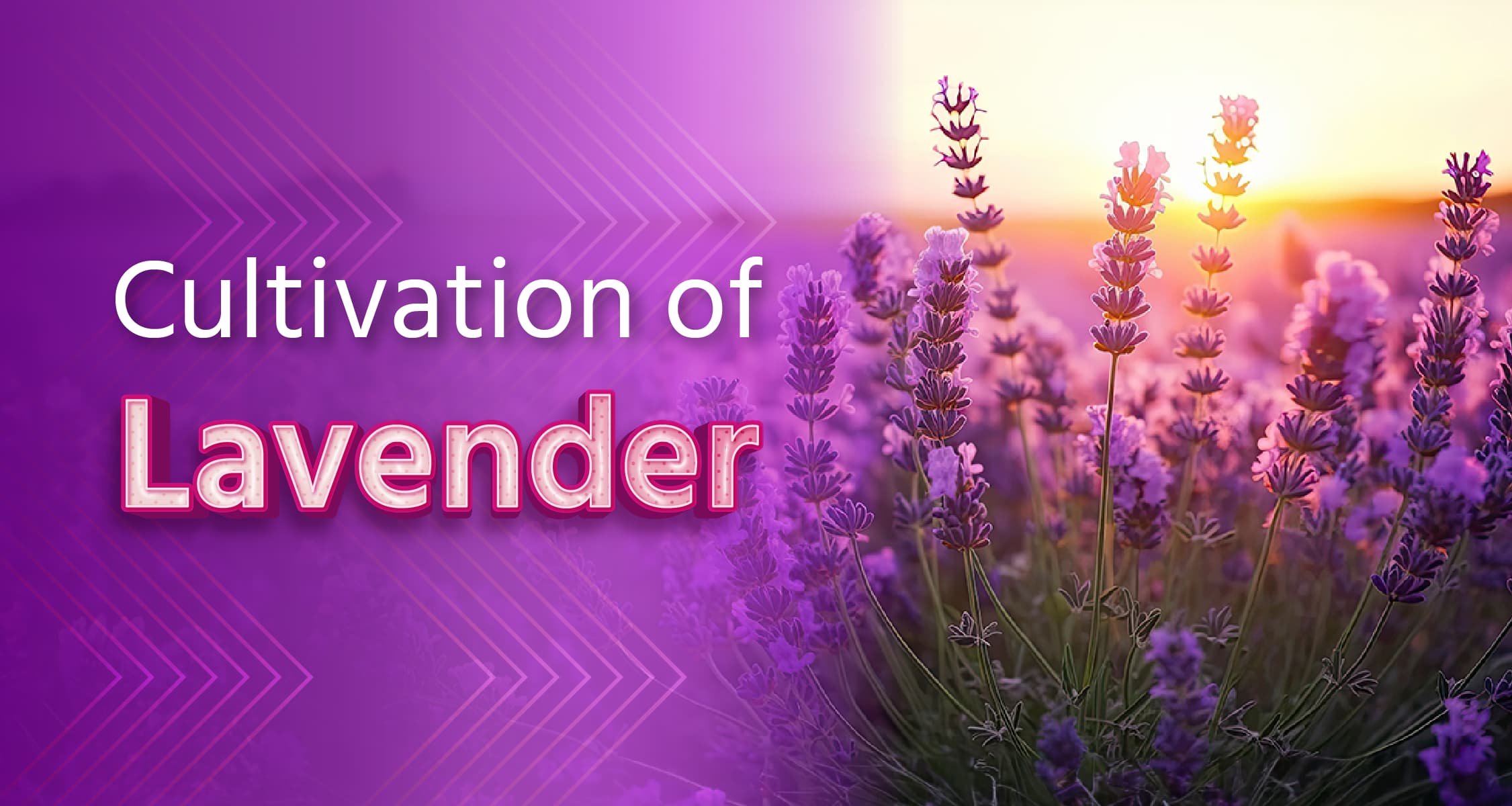Cultivation of Lavender

Lavender is an evergreen plant. It is cultivated not only for fresh flowers but also for extracting oil. Lavender also possesses several medicinal properties. Its oil is used to make soap, perfume, and various other beauty products. Additionally, tea and several other food products are also prepared from it. Lavender plants grow to a height of 2 to 3 feet, and their flowers are blue and purple in color. Lavender cultivation can be done on land that requires less water and maintenance, making it economically viable. While lavender is primarily cultivated in Europe, especially in France and Italy, it is now gaining popularity in India as well. Let's explore some important information related to lavender cultivation.
How to Cultivate Lavender?
Suitable Time
- The most suitable seasons for cultivating lavender are autumn and spring. November-December is the ideal time for preparing its nursery. During this period, the temperature is neither too high nor too low, providing ideal conditions for plant growth.
Suitable Climate
- For better growth, lavender requires a cold climate. Excessive heat and high humidity can be harmful to the growth of lavender. Heavy rainfall can also be detrimental to the plants. For seed germination, a temperature of 12 to 15°C is needed. For plant growth, the temperature should range from 20 to 22°C. Lavender plants can tolerate a minimum temperature of 10°C and a maximum of 25 to 30°C. Lavender requires good sunlight to grow successfully, so it is more beneficial to cultivate it in areas that receive ample sunlight throughout the year.
Suitable Soil
- Light soil and sandy loam soil are the most suitable for lavender cultivation. It should be grown in soil rich in organic matter. Cultivating in slightly alkaline soil increases the oil content in the plants. The pH level of the soil should be between 5.8 and 8.3. Avoid growing lavender in heavy soil. If the soil is heavy, adding sand can improve its drainage capacity.
Best Varieties
- For oil production, select Grosso, Super, Provence, Abriali, and Seal varieties.
Field Preparation
- First, plow the field deeply once and leave it open for a few days. After that, mix well-decomposed cow dung manure into the field and irrigate. A few days after irrigation, when the top layer of soil starts to dry, do a light plowing. After plowing, level and loosen the soil by applying a harrow. Prepare ridges in the field for planting the saplings, keeping a distance of about 1-2 meters between the ridges.
Sowing/Planting
- Cultivation can be done by sowing seeds or by planting cuttings of the plants. However, it is more commonly done by planting cuttings. Select plants that are 1 or 2 years old for cuttings. Approximately 3,200 to 4,000 saplings can be planted per acre. Plant the saplings at a row distance of 1-2 m and maintain the plant-to-plant distance of 30-60cm.
Irrigation Management
- These plants do not require much irrigation. Special care should be taken to avoid waterlogging in the roots. Light irrigation should be done immediately after planting. Water as needed to maintain moisture in the soil. During the winter season, irrigation is done at intervals of 15-20 days. No irrigation is required during the rainy season. Avoid waterlogging in the field. It is better to use a drip irrigation system.
Weed Management
- Light weeding and hoeing should be done about 20 days after planting. Perform the second weeding and hoeing 20 to 30 days after the first. Weeding and hoeing should also be done after cutting the plants. Controlling weeds can be easily managed by weeding 2-3 times a year.
Pest and Disease Management
- Lavender plants are highly sensitive to root rot, powdery mildew, and aphids. Continuously inspect the plants to protect them from these diseases and pests. Use appropriate insecticides or fungicides as needed. For effective pest control, consult agricultural experts.
Flower Harvesting
- Harvest the plants after 50% of the flowers have bloomed. Flowers can be cut when they have a deep color and emit a strong fragrance. The flower spikes are cut 15 to 20 cm below the flowers. In addition to selling fresh flowers, dried flowers can also be sold. Lavender oil is also in high demand in the market.
Have you ever cultivated lavender? Share your answers with us in the comments. For more agricultural information like this, follow the 'Krishi Gyan' channel now. If you found the blog interesting and informative, please like it and share it with your fellow farmers.
Frequently Asked Questions (FAQs)
Q: How do you plant a lavender plant?
A: To plant lavender, choose a location that does not have waterlogging issues and receives adequate sunlight daily. Then, take cuttings from a plant that is 1 or 2 years old and transplant them. After transplanting the cuttings, water them lightly.
Q: Can we grow lavender at home?
A: Yes, lavender can be grown at home in pots or containers. Choose a well-drained potting mix and a sunny spot for the plant. Water the plant regularly, but avoid overwatering, and prune it regularly to encourage bushy growth.
Q: Can lavender grow during the rainy season?
A: Lavender is a drought-tolerant plant and prefers dry conditions. It may not thrive well during the rainy season in India, as excess moisture can cause root rot and other fungal diseases. It is best to grow lavender during dry weather or in well-drained soil mixtures to avoid waterlogging.
जारी रखने के लिए कृपया लॉगिन करें

फसल चिकित्सक से मुफ़्त सलाह पाएँ
